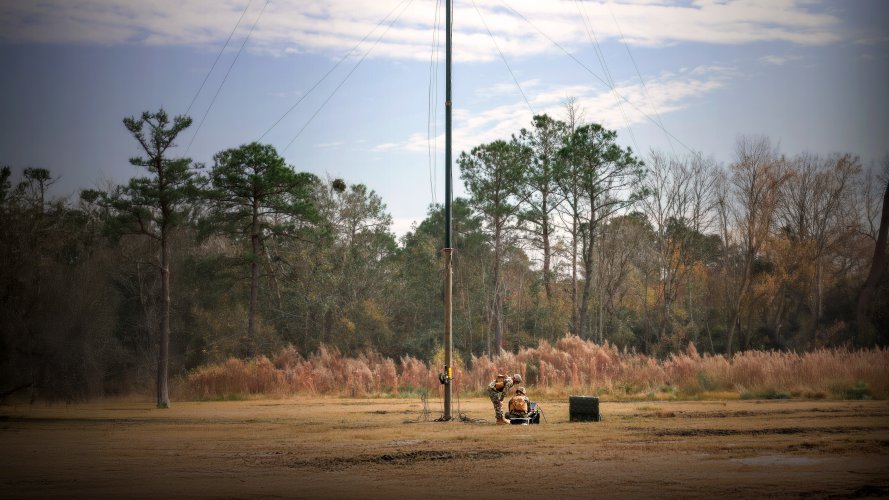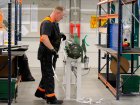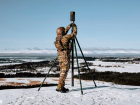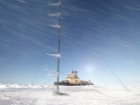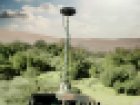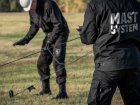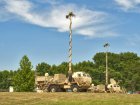News
Why Telescopic Masts Matter in Modern Warfare
Introduction
A platoon leader kneels beside a snow-covered timberline. His radio crackles with fragments—terrain blocks the signal. Behind him, a carbon-fibre pole slides upward, locking at each section. Antennas and thermal optics rise above the pine trees. In seconds, the platoon gets clear contact, sees an incoming drone, and sends a fire mission. That slender mast turned confusion into clarity.
Telescopic masts do one thing: they enhance the battlefield’s senses. That function helps with communications, electronic warfare (EW), and sensor fusion everywhere. The tactical antenna mast ensures that force stays connected. This keeps everyone informed and ready. This article explains why elevation is important. It also looks at how new mast designs help support high-tech payloads. Finally, it outlines what buyers should think next.
The Tactical Value of Elevation
Communication Lifeline at Height
LoS (Line-of-Sight radios) radios send key data, but hills, buildings, and trees can block the signal. A telescopic mast elevates antennas above those obstacles, restoring range and signal quality. Programs such as the U.S. WIN-T network use vehicle-mounted masts and 30 meters long TR-field masts. These masts connect frontline units to brigade and division nodes.
Why Elevation Matters
- Each extra meter can enhance UHF coverage in rolling terrain.
- Raised antennas reduce multipath fading, improving voice clarity and data throughput.
- Elevated SATCOM terminals reduce local clutter. This speeds up the time to engage a satellite lock.
- Field experience suggests that increasing an antenna to 10 meters can greatly extend the effective combat-net radio range over backpack antennas, though actual performance advantages vary with environment and equipment.
While satellite communications are significant, however, they have narrow bandwidth and are constantly vulnerable to jamming and spoofing in combat environments. This has increased the reliance on independent, line-of-sight tactical networks supported by elevated platforms.
Speed and Flexibility in the Field
Fast, Tool-Free Setup
Mastsystem’s mechanical deployment avoids power packs, compressors, or hydraulic pumps. Two operators can raise a 10 m composite mast in around 15 minutes under field conditions. For heavier loads—over 50 kilograms or over 30 meters—two or three people may be needed. This can take up to 30 minutes, but it provides longer heights and great strength in tough terrain.
This speed of setup isn’t just convenient—it’s critical in domains like electronic warfare, where seconds can define who detects or disrupts first.
Materials and Mechanics: Built for the Battlefield
Composite Strength
Fiberglass-carbon hybrids give Mastsystem masts a strength-to-weight ratio that can reduce mass significantly compared to aluminum tubes. Lower mass allows easier rooftop installation on light tactical vehicles. Mounting on a range of platform options offers even more flexibility—high-performance mast systems can be fitted to vehicles, trailers, portable manpacks, or ISO containers, depending on mission requirement. Cable-, dual-belt-drive or steel wire vehicle-mounted systems of high capacity can hoist up to 600 kilograms in just two minutes, offering excellent performance for mobile radar or surveillance bases.
No External Power
Purely mechanical deployment works in blackout conditions. Crews keep full capability even when batteries run low or a generator fails. Former Finnish Defence Forces R&D Director Jyrki Kosola captured the design ethos: "If it works in Finland, it will work anywhere." As a Finnish company, Mastsystem designs and tests its mast systems in some of the harshest environments in Europe, including arctic conditions—ensuring reliability under extreme cold, wind, and snow.
Minimal Maintenance
Composite sections are built to resist dust, salt fog, UV exposure, and mechanical wear. The design avoids seals, pumps, or O-rings, minimizing components that could compromise performance in field conditions. Mastsystem mast structures are tested to meet MIL-STD-810 and DEF STAN 00-35 environmental standards, ensuring durability under demanding operational scenarios.
Mast Systems in Electronic Warfare and ISR
Elevated Edge in Electronic Warfare
Spectrum dominance begins with detection. Direction-finding (DF) arrays mounted on a military mast can pick up weak enemy transmissions that ground-level sensors may miss. Jamming payloads then reach further with the same wattage because height improves line-of-sight to the target emitter.
Open-source imagery from Ukraine shows EW teams using mast-mounted DF antennas and high-gain yagis to locate control links for small unmanned aircraft. A key example of this model is the U.S. Army's Prophet system. It’s a tactical SIGINT and EW platform mounted on vehicles like Humvees. The system has a 7-meter telescopic mast that elevates antennas. This helps capture signals and find directions better near the front line. Operators say that higher antennas help with better coverage and may speed up signal acquisition.
Key EW Benefits
- Better geolocation. Triangulation accuracy improves with antenna separation and a clear horizon.
- Stronger jamming footprint. Elevated emitters can disrupt hostile drones at greater distances.
- Lower visual signature. A slim mast blends with tree lines better than a hovering quadcopter.
Modular Sensor Hub for C4ISR
Modern masts resemble Swiss Army knives. NATO standard interface plates make it easy for crews to attach thermal cameras, ground-surveillance radars, and mesh-radio repeaters quickly. A single field-deployable mast can serve as a pop-up observation tower, a RF listening post, and a mesh node. All these functions send live data to a commander’s Common Operating Picture (COP).
Typical Payload Mix
- Thermal camera: capable of detecting a quadcopter several kilometers away under ideal conditions.
- GSR module: tracks foot patrols and vehicles beyond the visual range.
- Spectrum sensor: scans across military-relevant frequency bands (e.g., 20 MHz – 6 GHz).
- C4ISR gateway: fuses sensor feeds and pushes them over IP via mesh radios.
These stacks share power and data over a single lightweight loom, reducing clutter around the mast base. In some configurations, masts also carry meteorological sensors—such as wind speed, temperature, humidity, and barometric pressure gauges—providing critical local weather data for artillery fire support and air operations planning.
As operations speed up and decision-making moves from human to machine pace, the need for quick data collection and integration increases. Elevating sensors quickly and reliably is essential to feed high-volume data into battlefield management systems that construct and update situational awareness in near real-time.
Adapting to the Next Threat Cycle
Height Multiplies Awareness
A mast is a force multiplier due to the advantages of altitude. For example, raising a thermal imager from two meters to twelve meters can increase the drone-detection horizon under certain conditions. The added warning time may let shooters cue counter-UAS weapons before a threat enters lethal range.
Sound ranging arrays, radar panels, and optical turrets all gain precision when elevated above vegetation and terrain. Even a modest height boost can reduce blind spots caused by obstacles.
Ready for the Next Threat Cycle
The pace of conflict keeps rising. Future mast systems under development aim for faster setup times, improved wind resistance, and enhanced resilience against cyber or EMP threats. Designers are exploring the integration of encrypted radios within mast heads to simplify cabling and reduce snag points.
Rapid enhancements in surveillance and electronic warfare technologies continue to propel communication infrastructure development. Nations maintain a constant competition to surpass their rivals by utilizing systems that are adaptable, cloak themselves, and are resistant to jamming and intercepting. Modern field mast platforms, especially modular and vehicle-mounted solutions, must evolve continuously to meet these shifting requirements. Increasingly, these systems support decentralized mesh radio networks which operate without reliance on traditional infrastructure. Elevated nodes distributed across the field enable resilient, self-healing communication architectures that are more difficult to disrupt and quicker to deploy.
Tethered Drones and Telescopic Masts
Partners, Not Rivals
Tethered drones are ideal for rapid aerial surveys but they depend on weather, power, and trained operators. A vehicle-mounted mast offers continuous coverage with minimal upkeep. Used together, these systems can complement each other—the mast provides persistent oversight, while the drone extends reach beyond line-of-sight.
Feature Telescopic Mast Field Mast Tethered Drone
Power Requirement None Continuous
Weather Tolerance High Moderate
Maintenance Minimal High
Payload Weight Heavy modules OK Limited
Elevation Duration Hours to weeks Minutes to hours
Combined systems have shown promising results in reducing coverage gaps, though quantified field data remain limited.
Summary for Decision-Makers
Key Takeaways for Mission Planners
- Elevation enhances communication and sensor range cost-effectively.
- Mechanical masts offer high reliability in austere environments.
- Composite tubes reduce weight and ease transport.
- Modular mast heads enable multi-role sensor integration for C4ISR and EW.
- Decision-makers should request validated technical specs, not rely solely on marketing claims.
Final Thoughts: See First, Act First
Without elevated sensors and antennas, modern defense would be blind and voiceless.
They don’t fire shots. They don’t command units. But telescopic masts support the systems that do. They lift the battlefield’s “eyes, ears, and voice” to where they’re most effective.
In fast-changing environments, where seconds matter and signals compete, these platforms enable your unit to see first, communicate clearly, and respond with confidence.
If your force depends on information dominance, don’t overlook the mast.
Mastsystem engineers have delivered field-deployable mast solutions to over fifty countries worldwide. Whatever your mission calls for a rugged vehicle-mounted mast or portable system for operations forward, Mastsystem can tailor height, payload, and mounting configurations to fit operational needs.
As multi-domain threats grow, don’t let your force operate in the blind. Elevate your capability—literally.
Contact us for a demo or data sheet. Our support is based on field experience, not sales talk.
Frequently Asked Questions
1. What is a telescopic mast used in the military application?
A telescopic mast is a mechanical platform used to elevate antennas, sensors, cameras and other payloads in order to improve communication, surveillance, and signal intelligence on the battlefield.
2. Why are mechanical masts utilized over hydraulic or pneumatic ones?
Mechanical masts do not need external power or compressed air, making them more dependable, easier to maintain, and faster to deploy—ideal for combat operations.
3. How do masts improve electronic warfare?
They elevate jamming and signal intercept equipment, providing better coverage and earlier detection of the enemy's signals.
4. Are telescopic masts used with drones?
Yes. Masts offer persistence and stability, and drones offer flexibility. Together, they create a more comprehensive surveillance and communications system.
5. What makes up Mastsystem masts?
We use carbon fiber and fiberglass composites to reduce weight without compromising strength.
6. Do masts stand up to aggressive environments?
Yes. Mastsystem masts are tested to be able to withstand dust, sand, UV-radiation, water, bullets and freezing conditions without loss of performance.



